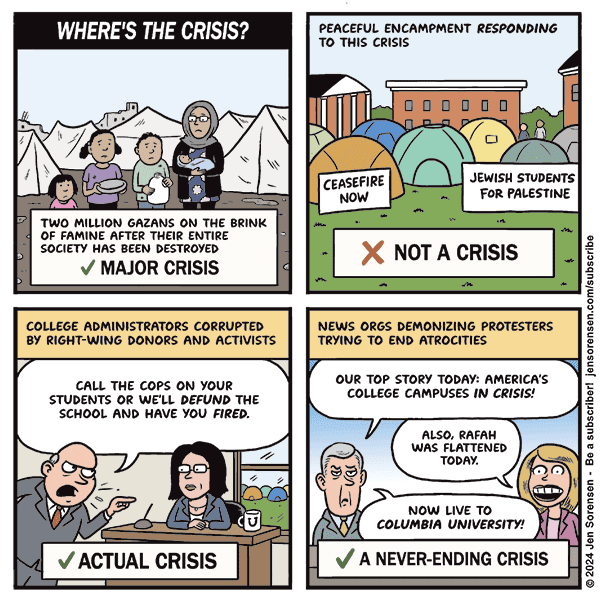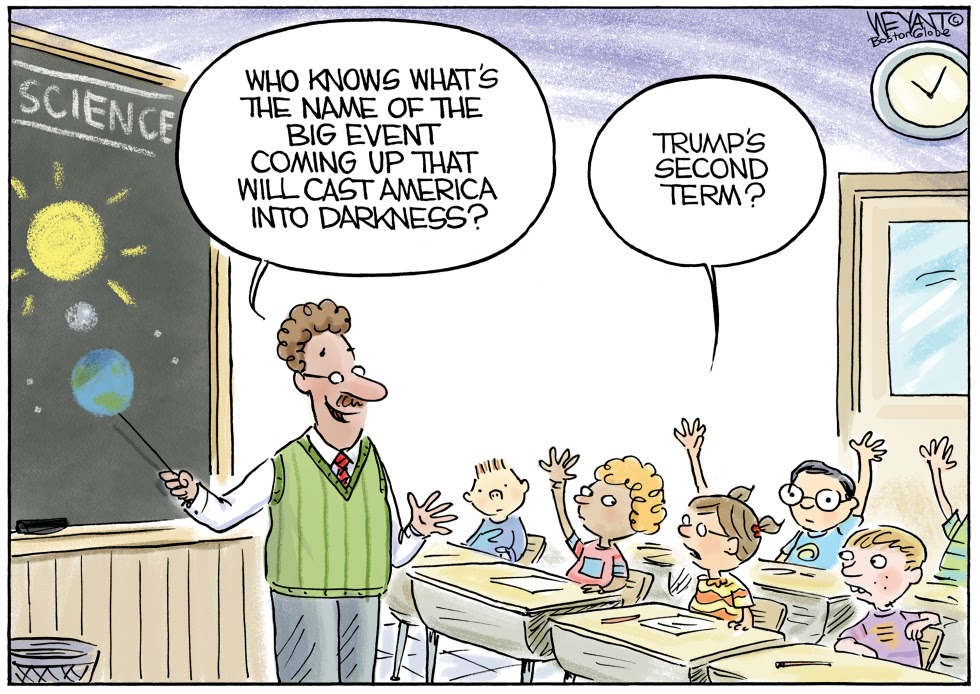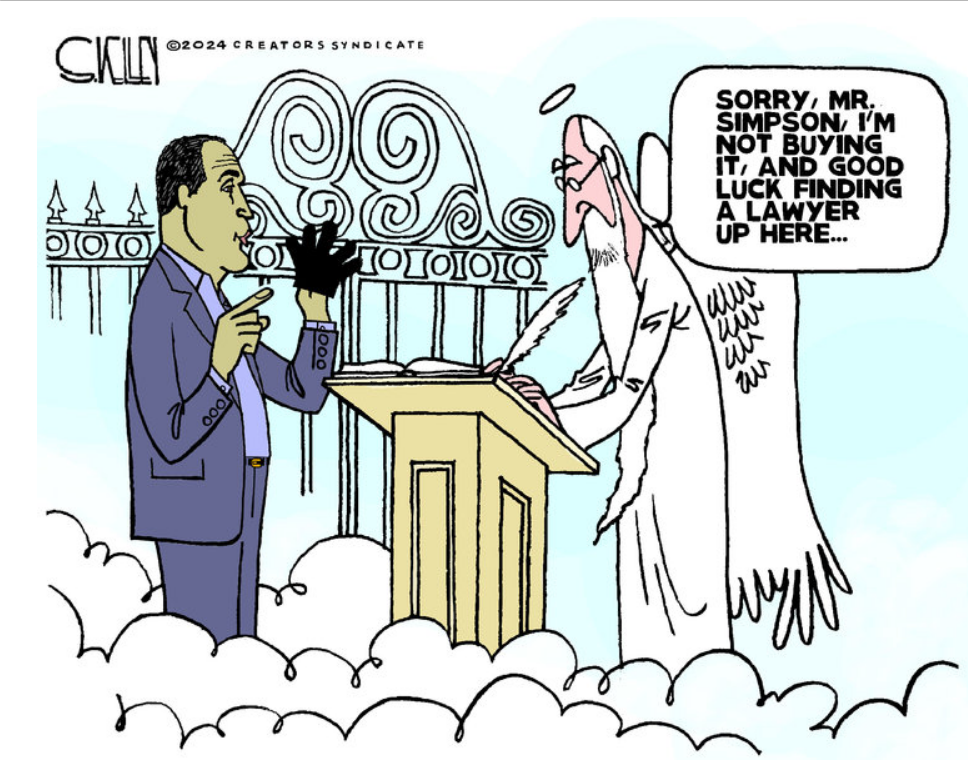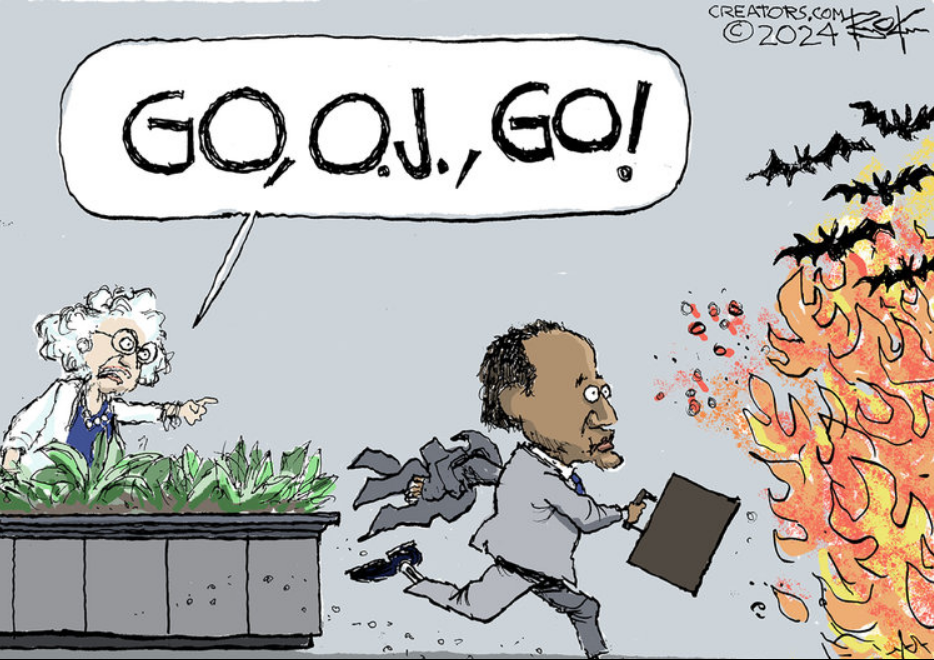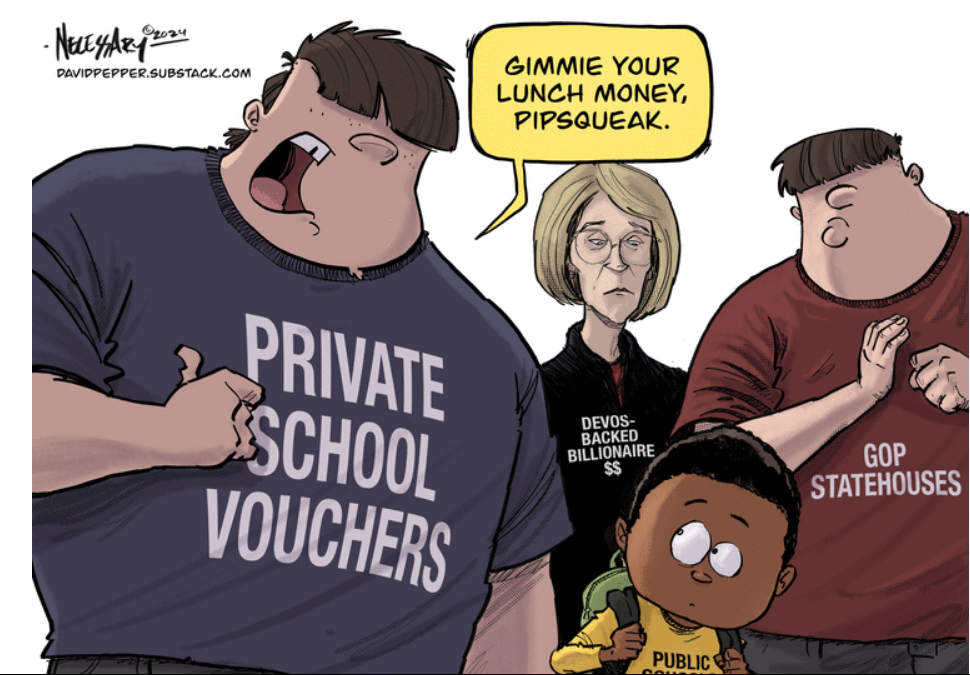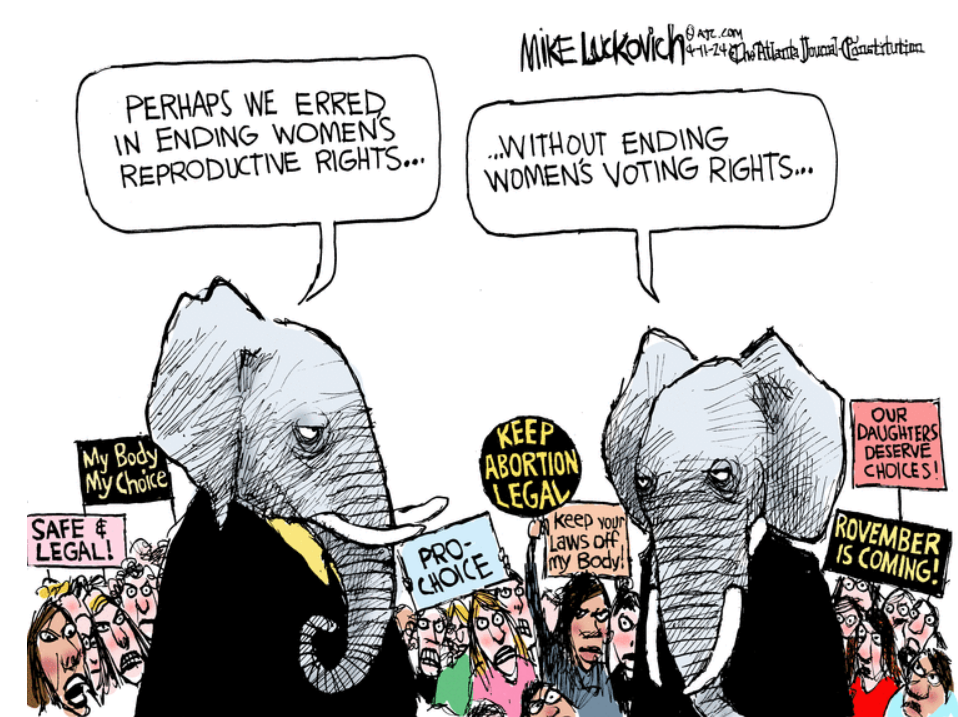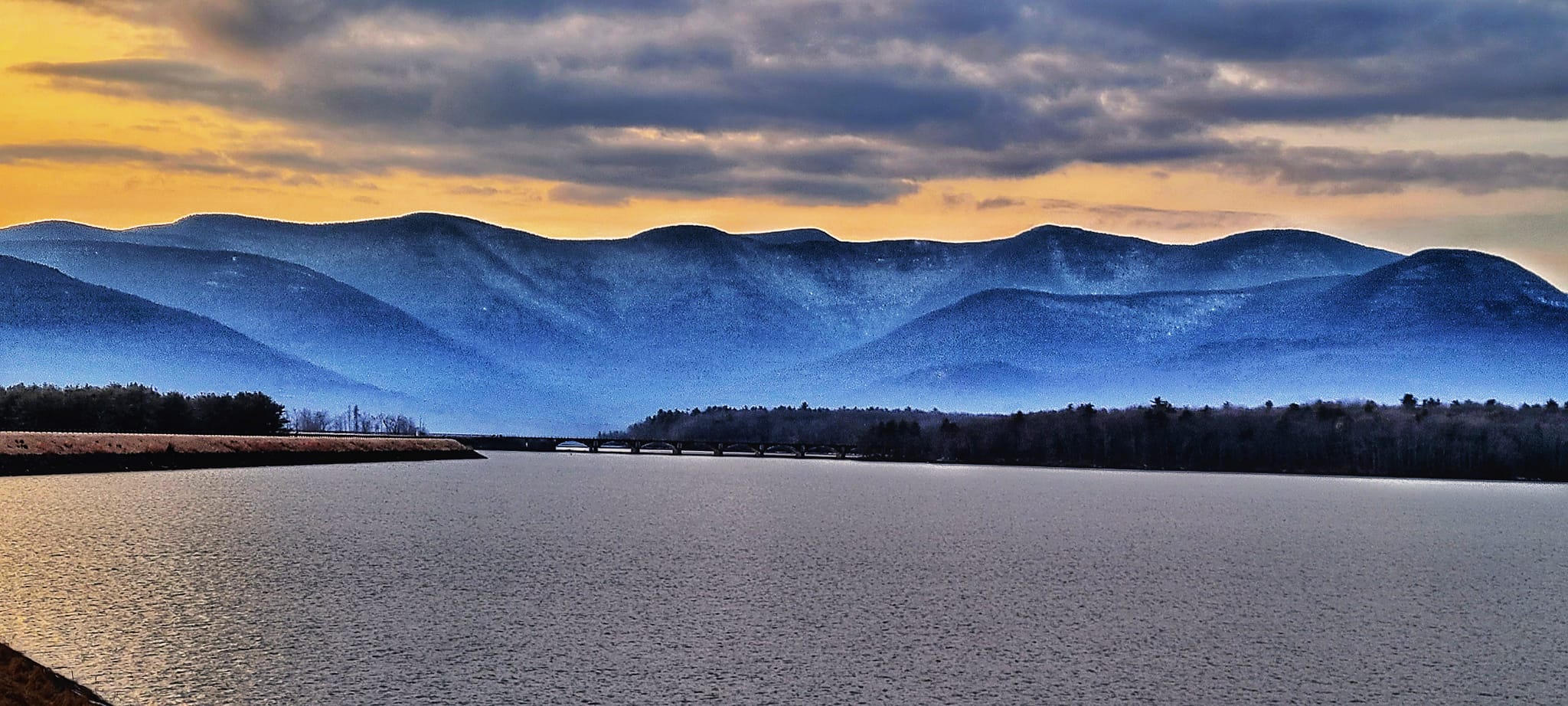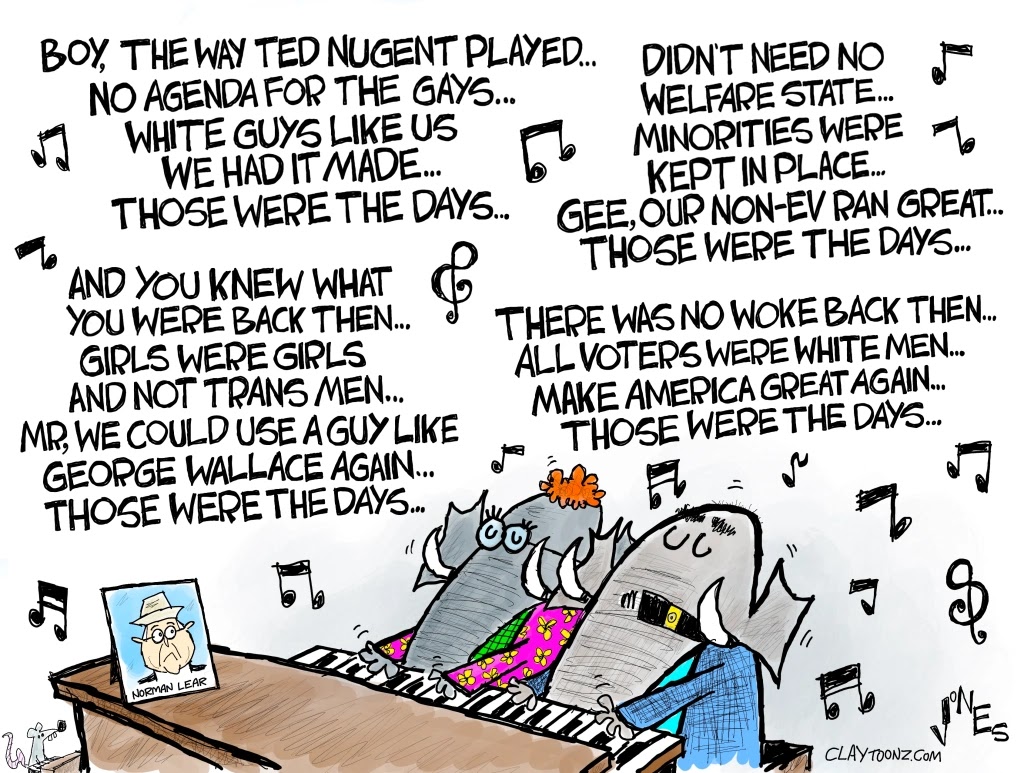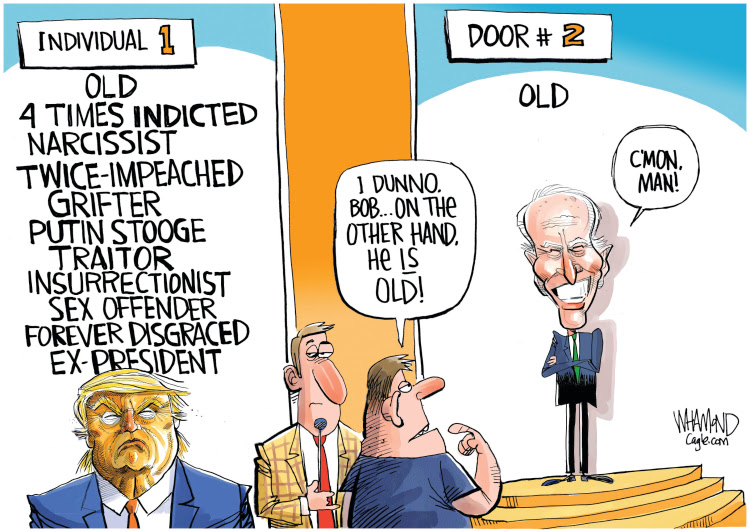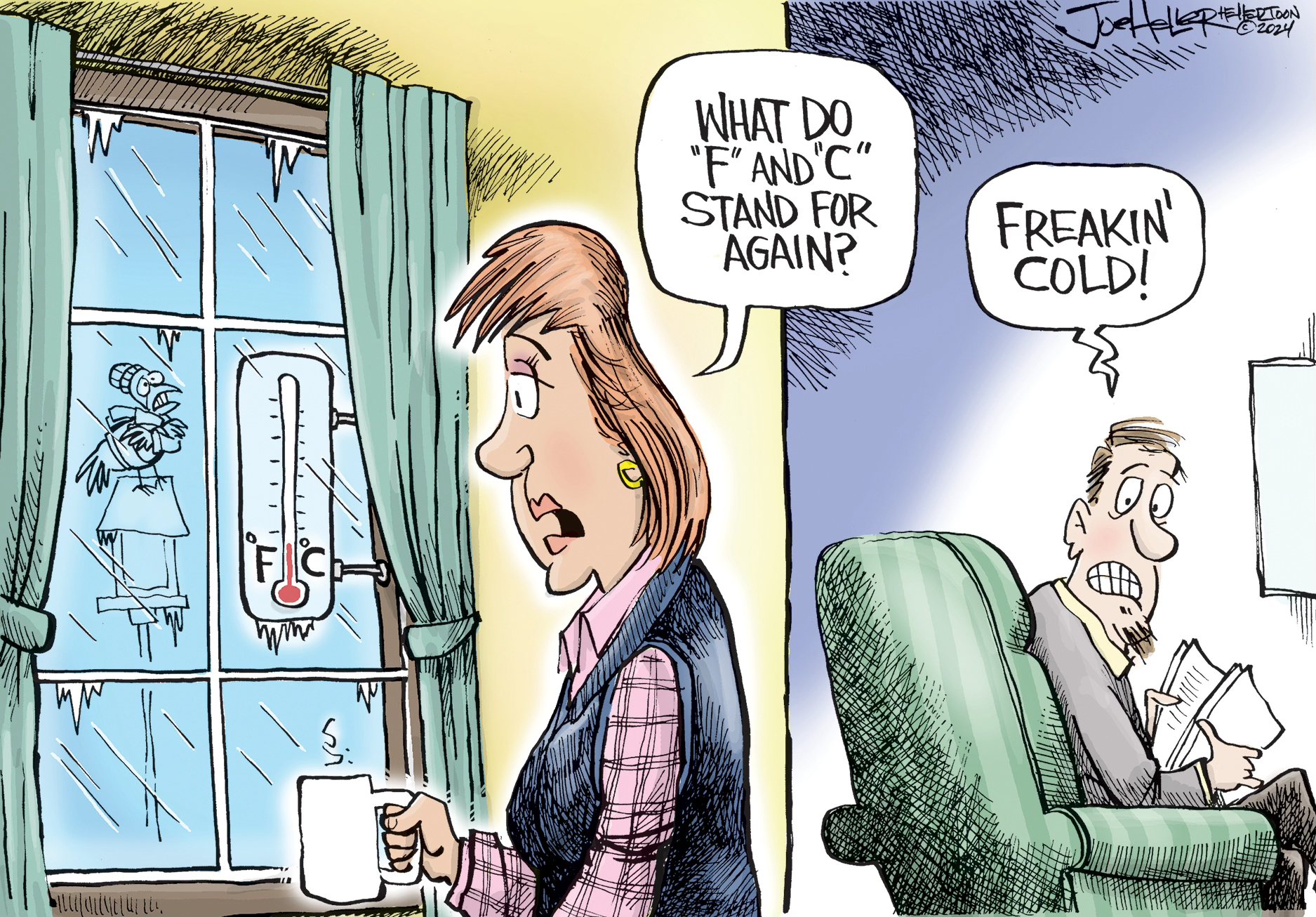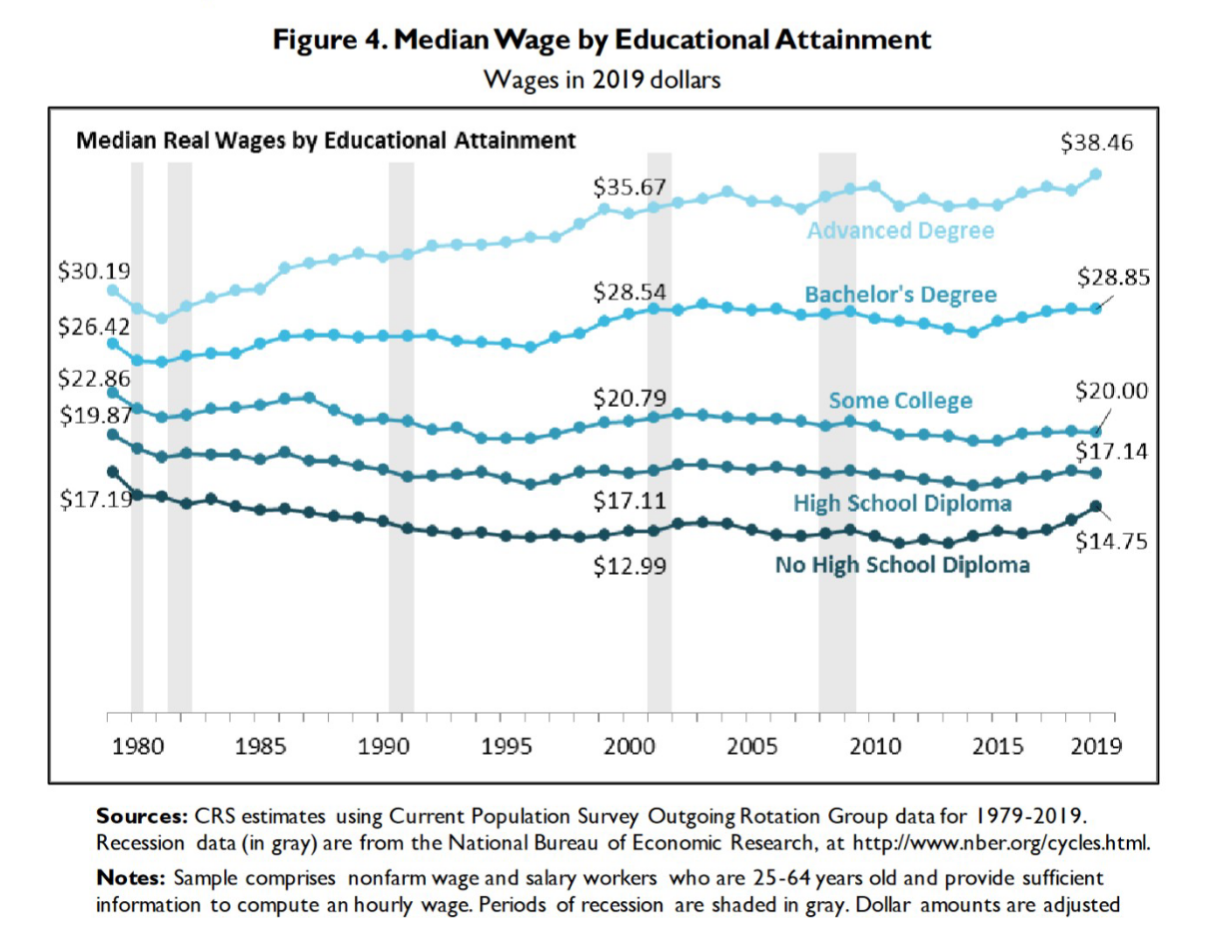The Daily Escape:

Mt. Mansfield, Stowe, VT – February 2024 photo by Micheline Lemay
“If you want to get laid, go to college. If you want an education, go to the library.” – Frank Zappa
Rebecca Gordon has an article at Salon about the growing attacks on public libraries by America’s Right:
“You might think that an apparently harmless public good like a library would have no enemies. But in the age of Trump…there turn out to be many. Some are “astroturf” outfits like the not-even-a-little-bit-ironically named Moms for Liberty. M4L, as they abbreviate their name, was founded in 2021 in Florida, originally to challenge Covid-era mask mandates in public schools. They’ve since expanded their definition of “liberty” to include pursuing the creation of public school libraries that are free of any mention of the existence of LGBTQ people, gender variations, sex, or racism.”
M4L supported Florida Governor Ron DeSantis’s 2022 and 2023 “Don’t Say Gay” laws, which outlaw any discussion of sexual orientation or gender identity in public schools, while making it extremely easy for parents or other citizens to demand the removal of books they find objectionable from school libraries.
Copycat laws have since been passed in multiple states, including Tennessee where a school district banned MAUS, the bestselling Pulitzer Prize-winning graphic novel about the Holocaust, from its curriculum, thanks to eight (now-forbidden) words and a drawing of a naked mouse.
One Florida school district went further. According to CBS News, it also banned:
“Merriam-Webster’s Elementary Dictionary…‘The Bible Book,’ ‘The World Book Encyclopedia of People and Places,’ ‘Guinness Book of World Records, 2000,’ ‘Webster’s Dictionary and Thesaurus for Students,’ and ‘The American Heritage Children’s Dictionary.’”
You never know what is lurking in a dictionary that might turn your kid gay.
Contemporary book-banning efforts now extend beyond school libraries, where reasonable people might differ about which books should be available to children, to public libraries, where book banners are seeking to keep adults from reading whatever they choose.
EveryLibrary, an anti-censorship organization, keeps a running total of legislation that is concerning in state legislatures that relates to controlling libraries and their librarians. Their current list of such bills, highlights 93 pieces of legislation moving through legislatures in 24 states.
More from Gordon:
“In 2024, they are focusing on…issues, including bills that would criminalize libraries, education, and museums (and/or the employees therein) by removing long-standing defense from prosecution exemptions under obscenity laws….In addition…they are focusing on potential legislation that could restrict the freedom of libraries to develop their collections as they wish, as well as bills that would defund or close public libraries altogether.”
Legislation pending in Oklahoma, the “Opposition to Marxism and Defense of Oklahoma Children Act of 2024”, isn’t concerned with removing books from Oklahoma’s libraries. It focuses on the American Library Association (ALA), which promotes and supports librarians. One of the ALA’s most important activities is the accreditation of library schools, where future librarians learn their craft.
Oklahoma’s “Opposition to Marxism Act” would outlaw cooperation with the ALA, including an existing requirement that public librarians have degrees from ALA-accredited library schools. This form of “opposing Marxism” means taking down a professional organization for librarians along with its Oklahoma affiliate. Gordon thinks this is because of the ALA’s support for “Equity, Diversity, and Inclusion,” (DEI) which MAGA’s are sure is code for Marxism.
Some history: Free public libraries first appeared in this country in the early 1800s. It’s generally agreed that the first dedicated, municipally funded public library in the world opened in 1833 in Peterborough, New Hampshire. A century earlier, Benjamin Franklin had founded the Philadelphia Library Company, a private, subscription-based outfit, funded by members who paid annual dues.
Public libraries as we know them might never have existed if it weren’t for Andrew Carnegie, the obscenely rich robber baron. He funded the building of more than 2,500 libraries worldwide, including some 1,700 in the US built between 1886 and 1929.
According to the ALA, there are 33,855 public libraries in the US along with 82,300 public school libraries
Back to today, Pen America, an organization that works to ensure that people have the freedom to create literature, to convey information and ideas, to express their views, and to access those views, keeps a running total of book bans in public schools. We do not have similar totals for bans in public libraries.
Between July and December 2022, instances of individual book bans occurred in 66 school districts in 21 states. PEN America recorded 13 districts in Florida banning books, followed by 12 districts in Missouri, 7 districts in Texas, and 5 districts in both South Carolina and Michigan. Texas districts had the most instances of book bans with 438 bans, followed by 357 bans in Florida, 315 bans in Missouri, and over 100 bans in both Utah and South Carolina:
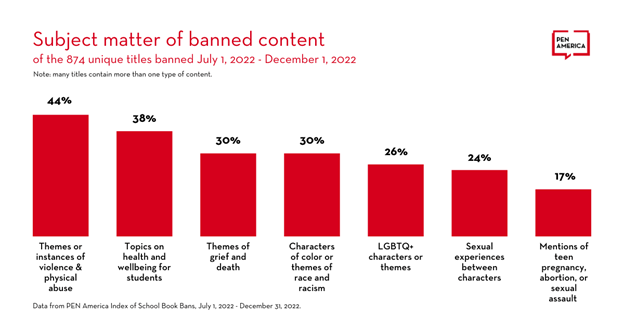
So far this school year, instances of book bans were concentrated in a few states – Texas, Florida, Missouri, Utah, and South Carolina. Frisco Independent School District in Texas, Wentzville School District in Missouri, and Escambia County Public Schools in Florida together banned over 600 books, whereas nationwide, most districts (76%) banned fewer books, between 1 and 19.
A public library should be shelving books that “someone might want to read” whereas a public school library should be shelving those that “we think it would be good for students in this age group to read”.
Since the latter is an actively encouraging role, parents should have more leeway to veto certain selections. Obviously that can easily get out of hand, and vetoes could result in tit for tat countermeasures. For a general public library, the ability of one person or group to veto what all others can read should be much more restricted. The solution we had long ago, in the dark days of Wrongo’s youth, was for material that some people did not deem age-appropriate to be checked out only with parental approval. Perhaps that option is no longer thought to be viable.
The internet age has made libraries vulnerable. People can check out digital books electronically, making the library look for alternative uses of its space. Over time, the library shelves may give way to digital archives of their material, causing another concern for how to use the library space efficiently.
But libraries should remain a neutral source of information for the community. And they should retain their–now quite wide ranging–public service function for as long as they can.
The answer to a bad idea should never be censorship. The answer is to counter it with good, or at least better ideas. Libraries and their communities should respect their patrons’ intelligence, provide them with access to information, and let them think things through for themselves.
Wrongo would rather know about the evil ideas that roam free in the world rather than have that evil proliferating in the dark. As an example, Mein Kampf is widely available, and that’s as it should be.
Otherwise, we may go back to the Dark Ages where most were illiterate and only the elite could read and write.




 The media’s lopsided reporting:
The media’s lopsided reporting: